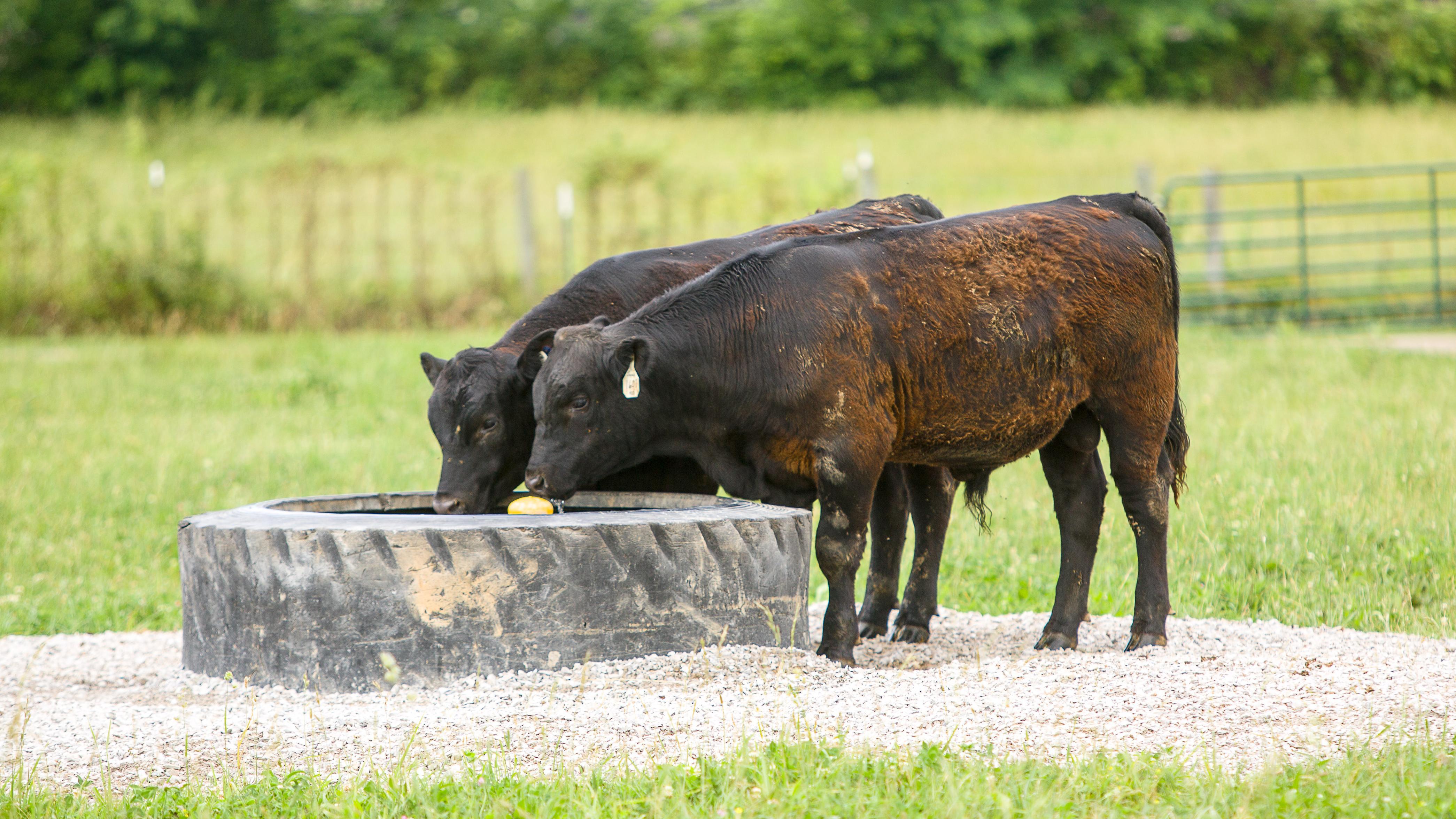High heat prompts livestock safeguards across Kentucky
High heat prompts livestock safeguards across Kentucky


An unseasonably intense heat dome has settled over Kentucky, sending afternoon highs into the mid-90s and pushing the livestock heat-stress index into dangerous — and at times emergency — levels.
Specialists go by what is called the “livestock heat stress index” to determine the level of concern farmers and pet owners should have for their animals. When the index reaches danger and emergency levels in the spring and summer, University of Kentucky Martin-Gatton College of Agriculture, Food and Environment experts urge people to take certain precautions to ensure the safety and health of their animals.
The livestock heat-stress index blends air temperature and humidity to gauge how hard animals must work to shed body heat. Readings in the danger range reduce feed intake and fertility; emergency readings can cause respiratory distress or death. The greatest risk comes from late morning through early evening, when temperature, humidity and solar load peak.
County-level index maps and alerts are available through the UK Agricultural Weather Center (http://weather.uky.edu).
Beef cattle: shade, water and timing
Cattle cool inefficiently because they sweat very little. This makes shade one of the most important things cattle can have when it comes to high temperatures, as shade lowers radiant heat load by up to 20 degrees Fahrenheit.
“A common mistake that is made with shade is not providing enough shade per animal,” said Katie VanValin, assistant professor in the Department of Animal and Food Sciences. “Cattle have a thermoneutral zone, which is a range of temperatures and humidity where they do not need to expend extra energy to maintain their body temperature. Beef cows need around 30 to 40 square feet of shade per head, with calves requiring 15 to 20.”
Cattle on dry lots can benefit from permanent roofs or shade cloth set four to eight feet above ground to let breezes flow.
Water intake rises sharply in hot weather, especially for lactating cows who may drink 30 gallons or more each day. Wide trough space, short walking distances and frequent cleaning keep tanks appealing for the animal.
“Research shows that cattle drink less when water is dirty, so ensure cattle have access to clean drinking water at all times,” VanValin said. “This includes cleaning waterers and troughs regularly. Steps should be taken to prevent cattle from entering ponds, as wading and defecating in the water can increase dissolved solids and decrease consumption. It is important to monitor all water sources regularly to ensure cattle always have access to clean water, as dehydration can cause death quickly.”
Mineral supplements should stay close to water sources to replace sodium, potassium and magnesium lost through heavier urination.
Rumen fermentation peaks four to six hours after a large meal. Shifting most of the daily ration to late afternoon pushes this internal heat pulse into cooler night hours. Any gathering for vaccinations, weighing or transport should finish by mid-morning.
Horses: airflow, hydration and salt
Like cattle, horses can have some of the same problems once air temperature passes 90 degrees, with high humidity magnifying the strain. UK equine extension specialist Bob Coleman, equine extension specialist in the Department of Animal and Food Sciences, also advises owners to ensure all animals have a good source of cool, clean water and make sure outdoor waterers and containers are kept clean.
“Consider the heat index when managing your horses,” Coleman said. “While horses sweat to help dissipate heat when the humidity is high, the process of sweating is compromised and may not be as effective.”
Like cattle, hot weather also increases horses’ need for salt because they lose the mineral during sweating. Making sure horses have access to a source of salt, either as a block or loose, is critical.
Coleman also advises owners to ride or haul during only the coolest hours.
“With the head and humidity, you might need to change when you ride or work the horses. Is an early morning schedule better than midday?,” Coleman said. “After working or in an aid to cool horses off, hosing them off and leaving the water on the horse to evaporate is a good plan. The evaporation helps with cooling.”
Barn airflow is as important as pasture shade. Open opposing doors, point fans down barn aisles and keep hay or equipment from blocking cross-ventilation. Horses kept outdoors should have access to large tree canopies or run-in shelters; some individuals will still graze in full sun, but ready shade lowers overall herd stress.
For more information on how to keep your livestock safe, contact your local extension office.
###
Writer: Jordan Strickler, jstrickler@uky.edu
The Martin-Gatton College of Agriculture, Food and Environment is an Equal Opportunity Organization with respect to education and employment and authorization to provide research, education information and other services to individuals and institutions that provide equal opportunities for qualified persons in all aspects of institutional operations and do not discriminate on the basis of race, color, national origin, ethnic origin, religion, creed, age, physical or mental disability, veteran status, uniformed service, political belief, sex, sexual orientation, gender identity, gender expression, pregnancy, marital status, genetic information or social or economic status.
Ag Equine Programs Animal & Food Sciences Veterinary Science Weather

